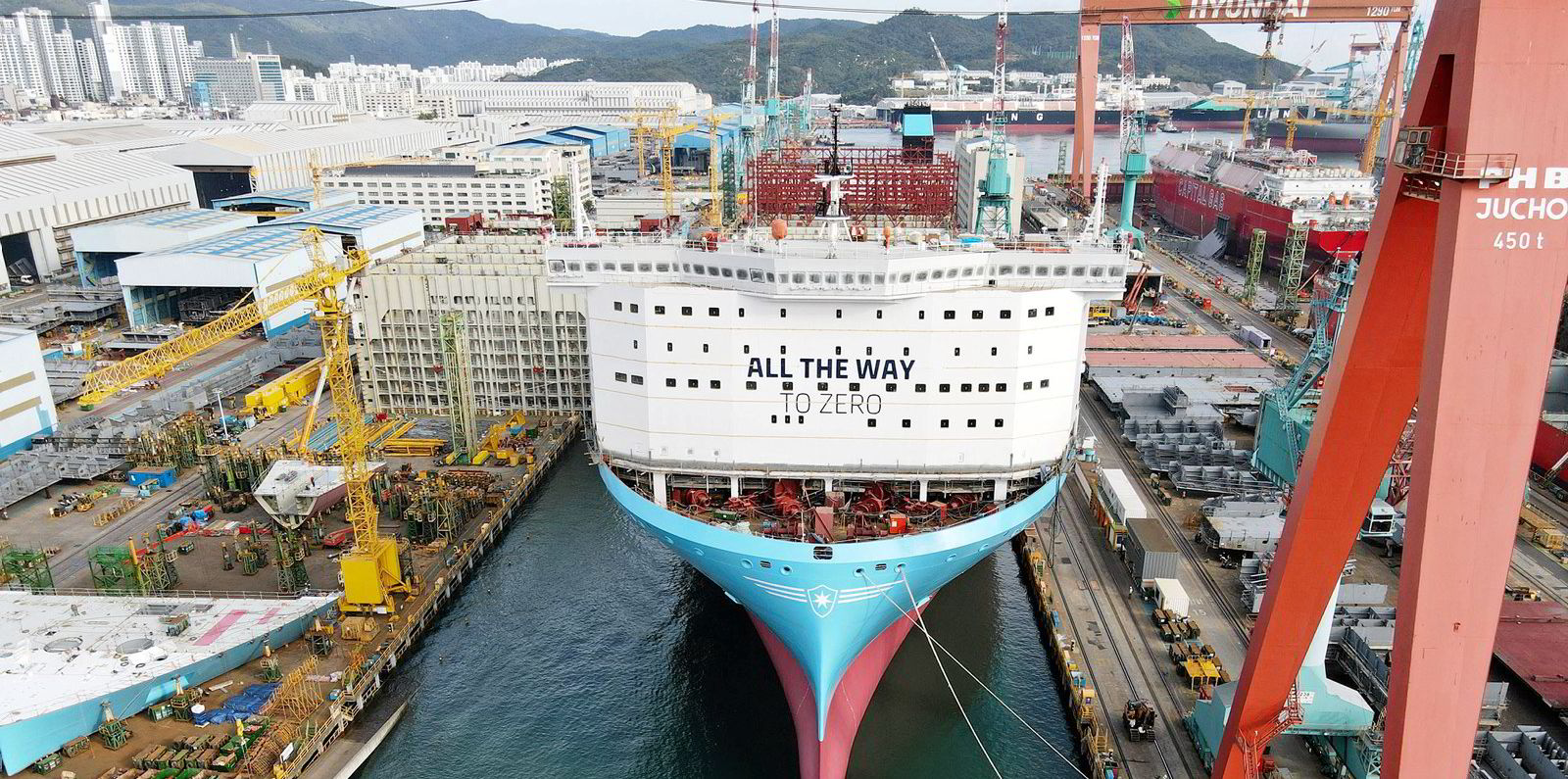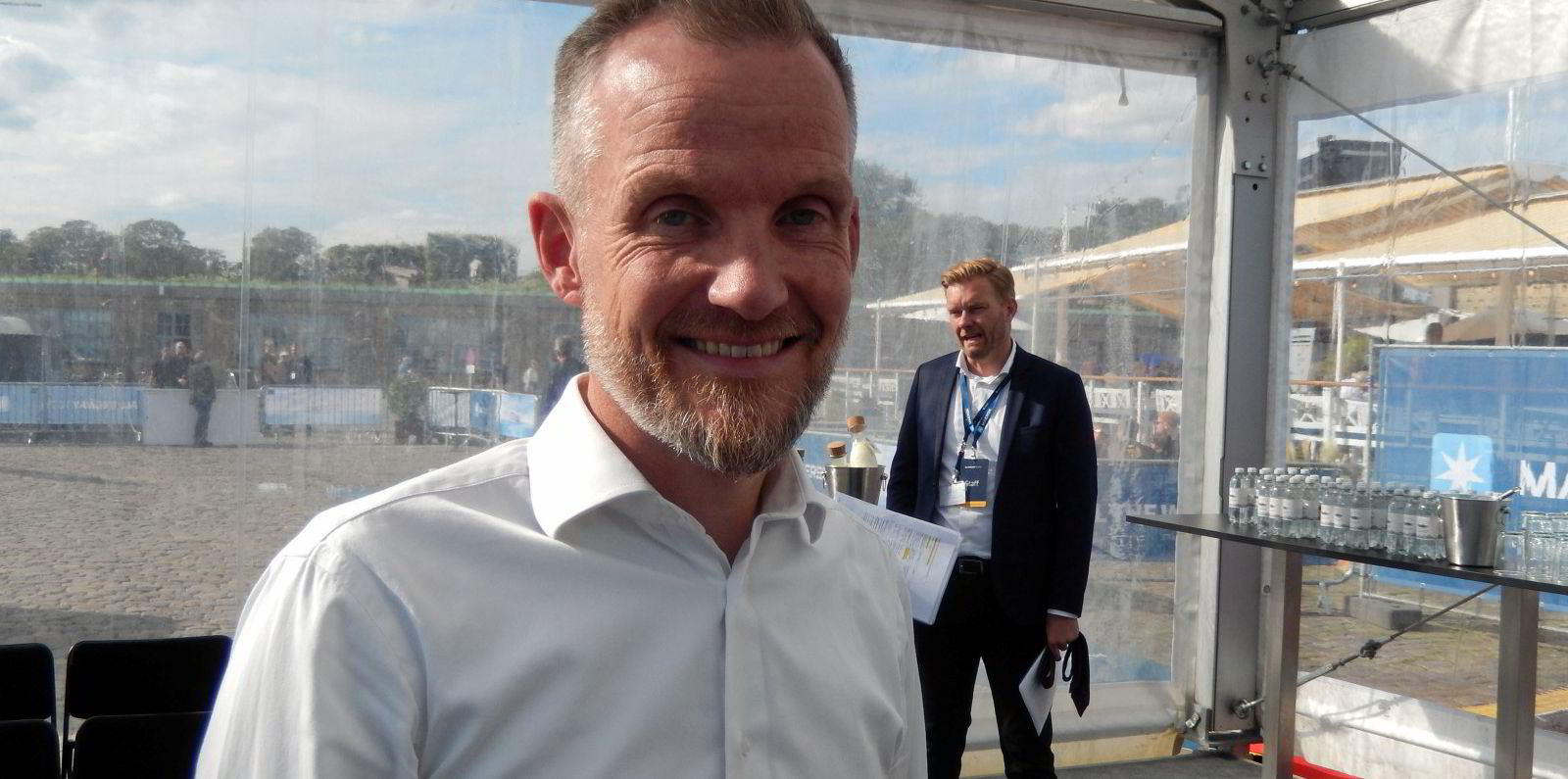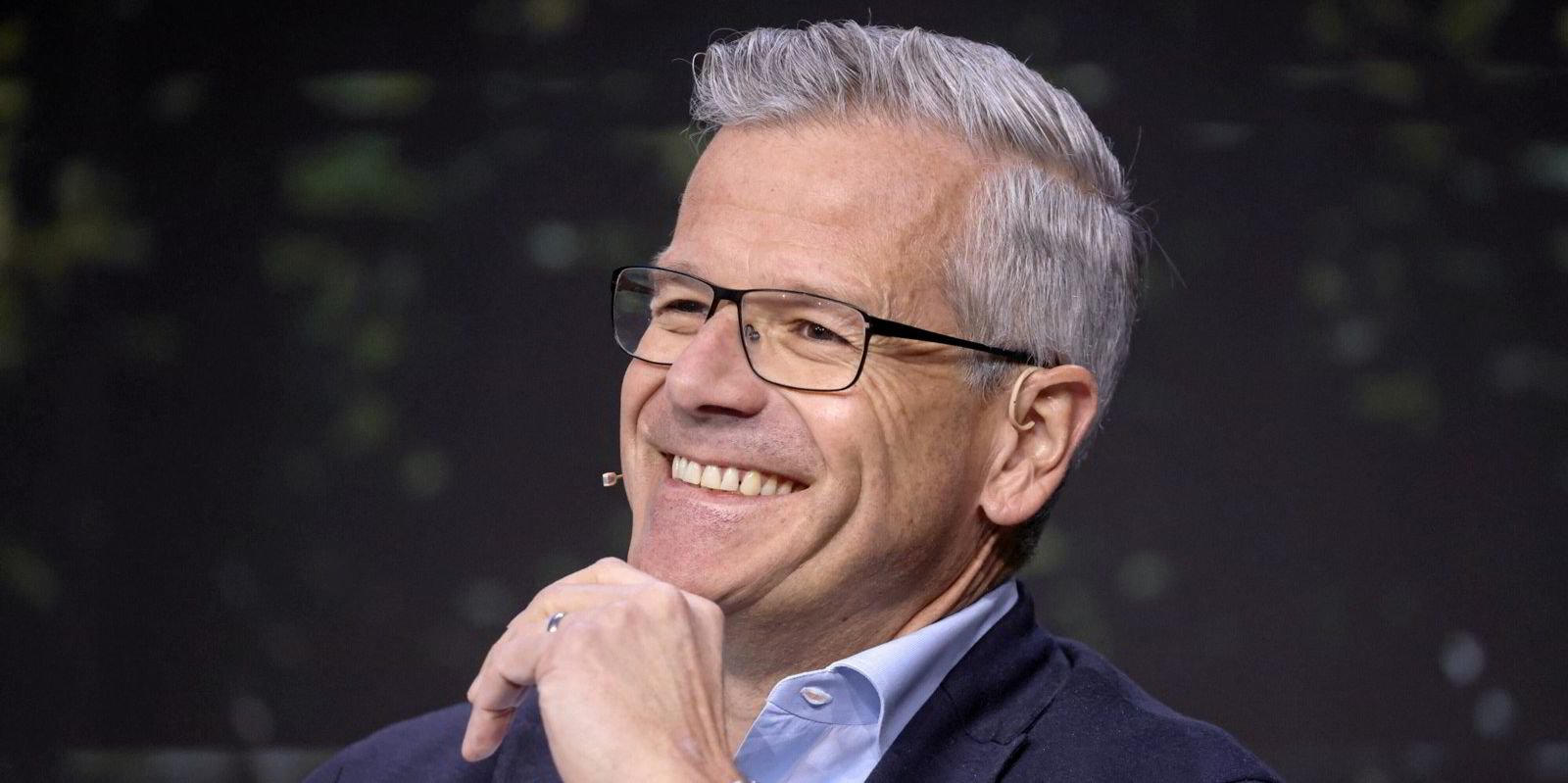A green methanol offtake deal signed between AP Moller-Maersk and Chinese renewables firm Goldwind is different to all the other announcements by the Danish liner giant, according to Morten Bo Christiansen, the group’s head of energy transition.
That is because this time it is a binding legal contract, he said.
Maersk has a fleet of dual-fuel container ships under construction, which can be powered by methanol and conventional bunkers and will begin to be delivered in 2024.
On Wednesday, it announced it had signed the deal with Goldwind to secure by 2026 some 500,000 tonnes of green methanol a year, which Christiansen said is enough to fuel the first batch of vessels.
By signing a binding contract it supports the Chinese fuel maker’s efforts to secure the investment it needs to build up the production facility in the next two years.
TradeWinds has counted over 10 memoranda of understanding in the last two years. With Maersk’s own investment into C2X, a European-based fuel maker, this amounts to about 5m tonnes per year if all are online and supplying Maersk by 2026.
The only other confirmed offtake deal for green methanol that Maersk has is with European Energy to supply a stem of green methanol from a new production plant being built in Jutland, Denmark, for the 2,100-teu newbuilding Laura Maersk, the group’s first foray into green methanol-fuelled vessels.
While the company waits for the Jutland facility to come on stream, Maersk has secured a temporary delivery from Equinor from a green methanol facility in Norway that is already online.
“We are not so vocal about them [the MoUs] anymore because there is a lot more competition in the market, so we like to keep our cards a bit tighter, but we do have a big pipeline of companies we are in dialogue with, and when I look at this pipeline, I am confident we can get the fuel we need. Now almost half our orderbook is accounted for,” Christiansen said.
Christensen confirmed the company will be looking to firm up other offtake agreements, probably in Europe or North America. The company has previously indicated that while it awaits green methanol supplies it may have to use other fuels.
The green methanol that Goldwind will produce, a mix of e-methanol and bio-methanol, will be sent directly to Maersk vessels, requiring a direct supply chain.

“We have different delivery options, and one of them is FOB delivery on board,” added Christiansen, noting how the green methanol cannot be mass-balanced through an existing methanol supply network, which has grey methanol.
Mass balancing is a recognised way of ensuring the green fuel or energy mixed into a network is properly accounted for.
Sharing infrastructure
While Maersk looks to secure legally binding contracts for green methanol, the company has signalled a desire to work with other shipping companies, and that includes teaming up with CMA CGM, to discuss possible green methanol bunkering infrastructure.
However, as TradeWinds has reported, there is a possibility that LNG-fuelling pioneer CMA CGM, which confirmed an order for methanol dual-fuel container ships recently, is understood to be opting to switch them to LNG dual-fuel vessels instead.
TradeWinds has also reported that Maersk is close to confirming a yard for a new series of methanol dual-fuel boxships, amid rumours of a move towards ammonia, something Christensen was keen to downplay pointing to unresolved safety questions.
“I think it’s a bit unfortunate how somebody wants to make this into some kind of competition,” he said.
“I think the only relevant competition here is the race against time. These two fuel pathways are going to coexist because they both have their pros and cons. And so we believe that there is a future for both.”





